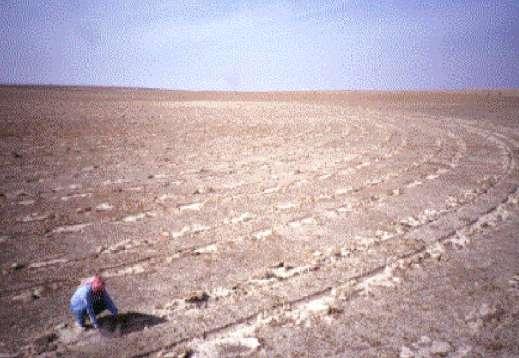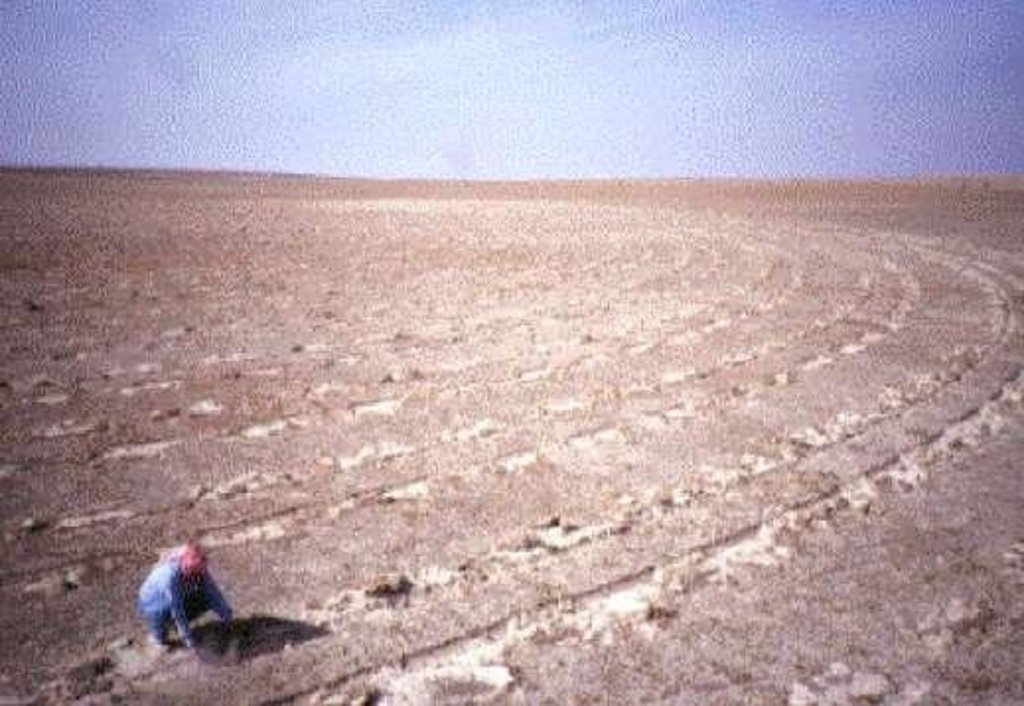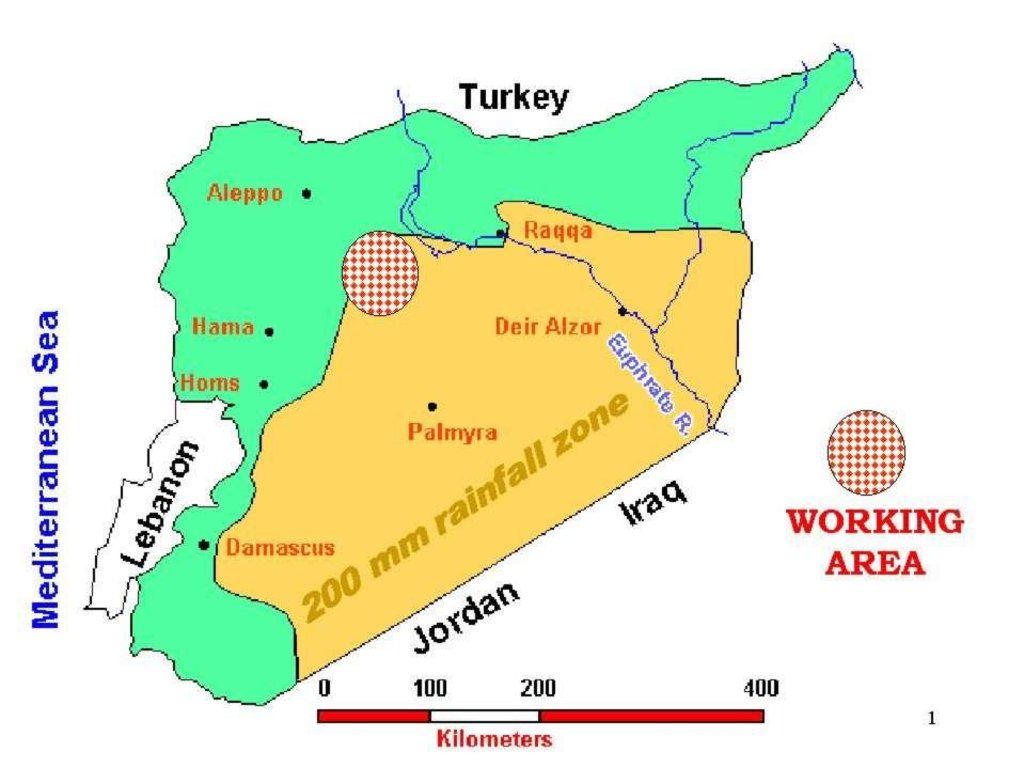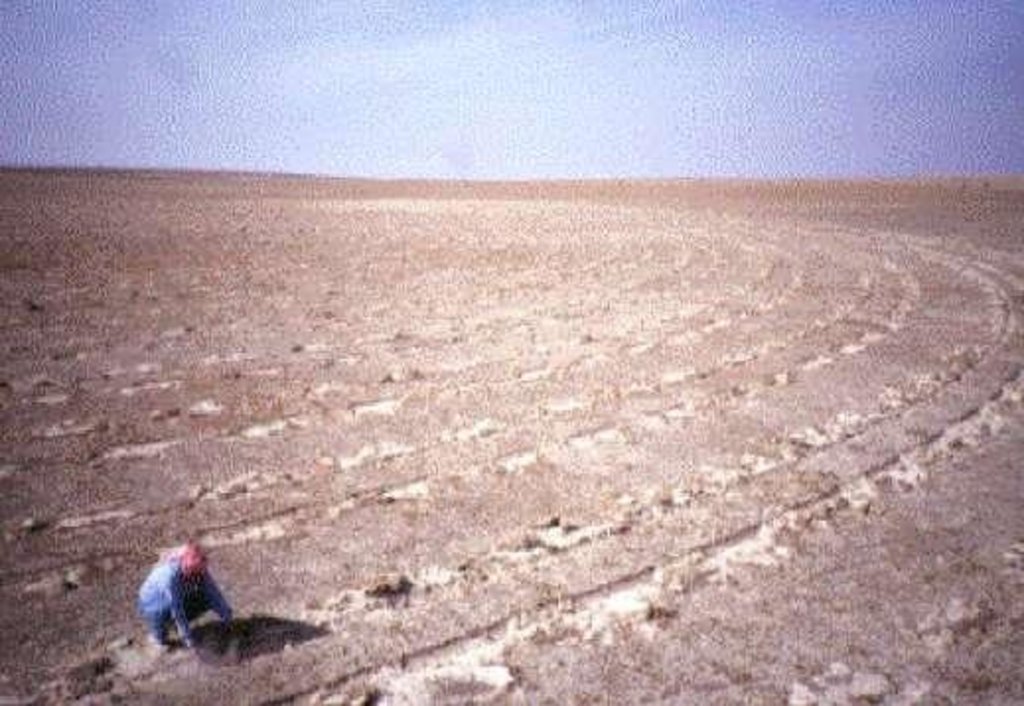Government assisted rangeland rehabilitation [Syrian Arab Republic]
- Creation:
- Update:
- Compiler: Unknown User
- Editor: –
- Reviewer: David Streiff
approaches_2334 - Syrian Arab Republic
View sections
Expand all Collapse all1. General information
1.2 Contact details of resource persons and institutions involved in the assessment and documentation of the Approach
SLM specialist:
Gintzburger Gustave
Name of the institution(s) which facilitated the documentation/ evaluation of the Approach (if relevant)
International Center for Agricultural Research in the Dry Areas (ICARDA) - Lebanon1.3 Conditions regarding the use of data documented through WOCAT
The compiler and key resource person(s) accept the conditions regarding the use of data documented through WOCAT:
Ja
1.4 Reference(s) to Questionnaire(s) on SLM Technologies
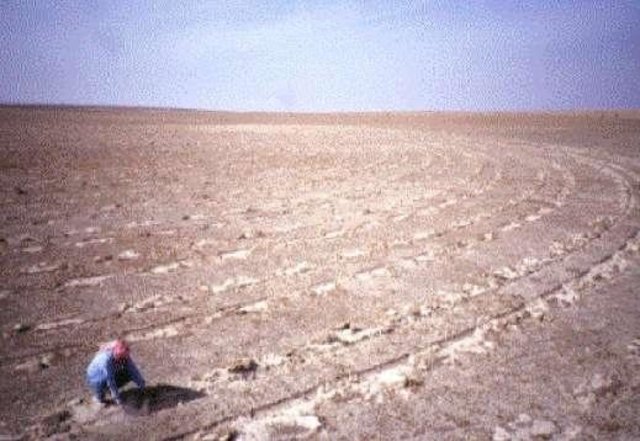
Range Pitting and Reseeding [Syrian Arab Republic]
No description available.
- Compiler: Fahim Ghassali
2. Description of the SLM Approach
2.1 Short description of the Approach
The rehabilitation of overgrazed and denuded rangeland with government intervention
2.2 Detailed description of the Approach
Detailed description of the Approach:
Aims / objectives: Based on the technology of range pitting and reseeding, a cost-effective way to rehabilitate rangelands, government institutions are rehabilitating large areas of public rangelands using a simple vehicle drawn pitting and reseeding implement.
2.3 Photos of the Approach
2.5 Country/ region/ locations where the Approach has been applied
Country:
Syrian Arab Republic
Region/ State/ Province:
Aleppo
Map
×2.7 Type of Approach
- project/ programme based
2.8 Main aims/ objectives of the Approach
The Approach focused mainly on SLM with other activities (rangeland rehabilitation, water harvesting, livestock grazing)
To prevent reduce rangeland degradation and rehabilitate degraded rangelands in a cost-effective way. To improve livestock production through the improvement of biomass production on the rangelands
The SLM Approach addressed the following problems: The control of rangeland denudation and degradation by wind and water erosion.
2.9 Conditions enabling or hindering implementation of the Technology/ Technologies applied under the Approach
social/ cultural/ religious norms and values
- hindering
The landusers are not aware of modern technologies
Treatment through the SLM Approach: Raise the level of awareness and extension
availability/ access to financial resources and services
- hindering
Although the technology is not expensive, the land users do not have sufficient funds
Treatment through the SLM Approach: Attractive loans to the land users
legal framework (land tenure, land and water use rights)
- enabling
The existing land ownership, land use rights / water rights moderately helped the approach implementation
knowledge about SLM, access to technical support
- hindering
The seeds are usually not covered by soil and may be blown away
Treatment through the SLM Approach: Improve design of the pitting machine/seder to provide soil cover after seeding
3. Participation and roles of stakeholders involved
3.1 Stakeholders involved in the Approach and their roles
- local land users/ local communities
Working land users were mainly men
- SLM specialists/ agricultural advisers
- national government (planners, decision-makers)
Steppe Directorate of the Ministry of Agriculture
- international organization
ICARDA
3.2 Involvement of local land users/ local communities in the different phases of the Approach
| Involvement of local land users/ local communities | Specify who was involved and describe activities | |
|---|---|---|
| initiation/ motivation | none | |
| planning | none | |
| implementation | interactive | |
| monitoring/ evaluation | none | |
| Research | none |
3.4 Decision-making on the selection of SLM Technology/ Technologies
Specify who decided on the selection of the Technology/ Technologies to be implemented:
- SLM specialists alone
Explain:
directive (top-down).
Decisions on the method of implementing the SLM Technology were made by by politicians / leaders. directive (top-down).
4. Technical support, capacity building, and knowledge management
4.1 Capacity building/ training
Was training provided to land users/ other stakeholders?
Ja
Specify who was trained:
- land users
Form of training:
- public meetings
Subjects covered:
The overall degradation of rangelends and the need to rehabilitate the rangelands
4.2 Advisory service
Do land users have access to an advisory service?
Ja
Specify whether advisory service is provided:
- on land users' fields
Describe/ comments:
Field days; Key elements: open discussion, short presentations by extensionists; 1) Advisory service was carried out through: government's existing extension system 2) Advisory service was carried out through: government's existing extension system; Extension staff: mainly government employees 3) Target groups for extension: land users; Activities: Field days
Advisory service is very adequate to ensure the continuation of land conservation activities
4.3 Institution strengthening (organizational development)
Have institutions been established or strengthened through the Approach?
- yes, greatly
Specify the level(s) at which institutions have been strengthened or established:
- local
Specify type of support:
- capacity building/ training
4.4 Monitoring and evaluation
Is monitoring and evaluation part of the Approach?
Ja
Comments:
technical aspects were regular monitored by 0 through measurements; indicators: None
economic / production aspects were ad hoc monitored by 0 through measurements; indicators: None
management of Approach aspects were ad hoc monitored by 0 through observations; indicators: None
There were no changes in the Approach as a result of monitoring and evaluation: None
4.5 Research
Was research part of the Approach?
Ja
Specify topics:
- technology
Give further details and indicate who did the research:
Modifications of the equipment used for pitting and seeding
Research was carried out both on station and on-farm
5. Financing and external material support
5.1 Annual budget for the SLM component of the Approach
If precise annual budget is not known, indicate range:
- 10,000-100,000
Comments (e.g. main sources of funding/ major donors):
Approach costs were met by the following donors: international (ICARDA): 65.0%; government (national - Ministry of Agriculture): 35.0%
5.2 Financial/ material support provided to land users
Did land users receive financial/ material support for implementing the Technology/ Technologies?
Ja
5.3 Subsidies for specific inputs (including labour)
- equipment
| Specify which inputs were subsidised | To which extent | Specify subsidies |
|---|---|---|
| machinery | fully financed | |
- agricultural
| Specify which inputs were subsidised | To which extent | Specify subsidies |
|---|---|---|
| seeds | fully financed | |
If labour by land users was a substantial input, was it:
- paid in cash
Comments:
At government-approved minimum wage rate
5.4 Credit
Was credit provided under the Approach for SLM activities?
Nee
6. Impact analysis and concluding statements
6.1 Impacts of the Approach
Did the Approach help land users to implement and maintain SLM Technologies?
- No
- Yes, little
- Yes, moderately
- Yes, greatly
They protected the pits from grazing to conserve moisture
Did other land users / projects adopt the Approach?
- No
- Yes, little
- Yes, moderately
- Yes, greatly
6.3 Sustainability of Approach activities
Can the land users sustain what has been implemented through the Approach (without external support)?
- uncertain
If no or uncertain, specify and comment:
Although the technology is cost-effective, the landusrs do not have sufficient financial means to continue with the range rehabilitation measures without assistance
7. References and links
7.1 Methods/ sources of information
- field visits, field surveys
- interviews with land users
Links and modules
Expand all Collapse allLinks

Range Pitting and Reseeding [Syrian Arab Republic]
No description available.
- Compiler: Fahim Ghassali
Modules
No modules


